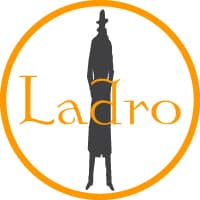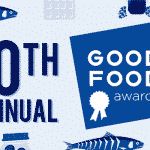
Which Alternative Milks Do Baristas Use?
Alternative Milks Used at Caffe Ladro
Options for alternative milks have increased over the last decade. Customers who used to choose among whole, skim milk, and half-n-half, also have a variety of plant-based options today. Alternate milks are typically any milk product that is made from a plant source (eggnog and whipping cream are also used in latte beverages and are not plant based). Many choose non-dairy milks because they have lactose allergies or they have dietary restrictions. Whatever the reasons for the shift to non-dairy milks, learning about them will help you choose which you might prefer in your latte or your glass. If you’re considering milk alternatives for your coffee or tea, the below types are available at Ladro.
The current list of non-dairy milks we offer at Ladro includes: Hemp, Oat, Almond, and Soy.
Hemp Milk
One non-dairy option is Hemp Milk. Hemp Milk is made by blending Hemp seeds and water, then straining. Many customers prefer this milk and find it to offer neutral flavor in their drinks. It is even a favorite of a celebrity cardiac surgeon. We use Pacific Hemp Milk, and share their nutrition information in the image below.
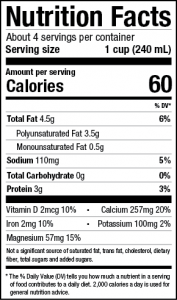
Oat Milk
Another milk alternative–Oat milk–is made by combining oats, water and depending upon the brand used, a variety of plant-based oil. Results vary brand to brand, but Oat Milk typically offers good texture to baristas. It possesses the health benefit of retaining dietary fiber. At Caffe Ladro, we use the Oatly Their ingredients include: Oatmilk (water, oats), rapeseed oil. Contains 2% or less of: dipotassium phosphate, calcium carbonate, calcium phosphate, sea salt, vitamin B12, riboflavin (B2), vitamin D2, vitamin A. Nutritional information for Oatly barista milk is different from Whole milk or Skim milk in more ways than the fiber content (when Oatly isn’t available, we use Califia). You see the Oatly nutrition label below.
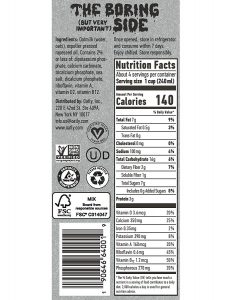
Almond Milk
A third alternative milk option is Almond Milk. Almond Milk was first made in the Middle East in as early as the 13th Century. Almond milk is made from soaking almonds in water, blending and straining. Baristas also find this product easy to work with. We use Califia Farms Almond Milk. The ingredients list for their product is: Ingredients: Almond Milk (Water, Almonds), Pure Cane Sugar, Calcium Carbonate, Sunflower Lecithin, Sea Salt, Potassium Citrate, Natural Flavors, Locust Bean Gum, and Gellan Gum, and we offer their nutrition chart below.
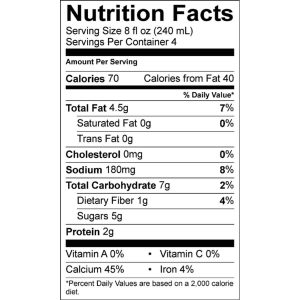
Soy Milk
The final non-dairy milk we offer at Ladro is Soy Milk. Soy Milk originated in Northern China in the 11th century. The first type called doujiang (lit. “bean broth“) is a by product of tofu production, and is more watery than the type called as dounai (“bean milk”). The latter is what you could walk into the market and recognize for purchase in the US. Soy Milk is one of the most common alternative milk options, perhaps because of it’s high protein content. We source our Soy Milk from Pacific, and share their nutrition facts below.
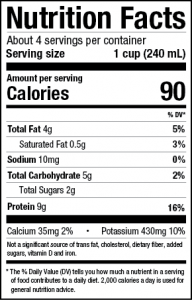
Each of these alternative milks is made through different processes, and has a different flavor and mouth feel. Each of these milks offers different nutritional value. Those differences impact how baristas work with them and how well those products will froth. If your interested in how well your milk of choice will froth, the below viscosity scale shared by Fresh Cup magazine is an easy visual guide. You’ll note that Oat Milk doesn’t appear on the scale. We would place it on the creamy end of the spectrum due to the fat content.
Non-Dairy Milks
The folks over at Eat This Not That compiled an excellent comparison guide if you’d like to read their assessment of the pros and cons of an exhaustive list of alternative milk options. We definitely recommend you take a look there.
